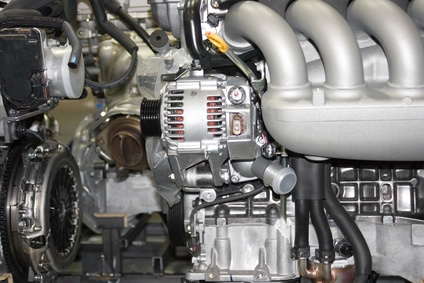
After the fuel/air mixture leaves the carburetor, it flows through long passageways inside the intake manifold. The mixture runs into the cylinder head, sitting atop the engine block. When the intake valve is closed, the mixture inside the intake manifold passageway becomes backed up and pressurized. There is a gasket between the intake manifold and the cylinder head which must withstand all of the pressure as well as heat from the engine block. Getting to the gasket will take some time because the cylinder head has to come off, which includes removing the carburetor, disconnecting the radiator hoses and all the other hoses and wiring.
Look on the intake manifold manufacturer's website or their literature for approved gaskets.
Remove all grease and dirt from the cylinder head intake flanges and the engine block end seal surfaces.
Coat the cylinder head side of the gaskets and the cylinder head flanges with gasket sealant. Let it air dry and put the gaskets in place
Squeeze a quarter inch bead of silicone sealer across each block end seal surface. Take care to overlap the intake gasket at the corners. This stops end seal slippage.
Install the intake manifold and tighten the bolts holding it against the gasket and cylinder head. For engines built before 1995, remember to put sealant all around the inner eight bolts. The bolt holes under the inner bolts aren't blind holes. Tighten the manifold completely following the instructions for torque and tightening sequence given by the intake manifold manufacturer.